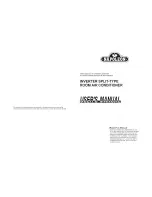
14
CONTAMINANT
CLEANING
PROCEDUREª
Mineral Oil
–
(petroleum base, diesters
and silicone)
Alkaline Solution
High Pressure Water
Paper Products
Alkaline Solution
Paint
–
Oil Base, Water Base
Alkaline Solution
Pine Tar Resins
Alkaline Solution
Steam
Polyethylene
Alkaline Solution
Polyphenyleneoxide
Alkaline Solution
Polypropylene
Alkaline Solution
Rubber Molding
Accelerators
Alkaline Solution
Soaps
Alkaline Solution
Sodium Chloride
Alkaline Solution
Sugar
–
(includes molasses)
Alkaline Solution
Steam
Talc
High Pressure Air
Alkaline Solution
Tobacco Tars and Smoke
Alkaline Solution
Varnishes
Alkaline Solution
Waxes
–
(all types)
Alkaline Solution
Steam
Welding Fumes
Acid Solution
Wood Products
Alkaline Solution
ªCleaning procedures are listed in order of preference.
REPLACING THE CELLS
Before replacing the electronic cells, be sure to
visually check the electronic cells for bent or
damaged collector plates or broken ionizing wires.
Bent or warped collector plates may be bent back
into shape.
FIGURE 15
–
REPLACING IONIZING WIRES
Broken or damaged ionizing wires must be
replaced for top efficiency. Remove all parts of
the broken or damaged wire. Replacement wires
come cut to length and ready for installation.
Remember that wires come cut to length and
ready for installation. Remember when replacing
the ionizing wires to:
1. Use care to avoid damage to the spring
connector or other parts of the cell during
installation.
2.
Hook “T” end of the ionizing wire in the
keyhole slot at one end of the cell.
3. Pull down the spring with a needle-nose pliers
and insert hook into the hole.
Before replacing the cell, it might be a good idea
to check it for a short circuit. This is done by using
an ohmmeter to check the resistance between the
frame of the cell and both the ionizer and collector
contacts. In each case, the resistance should be
infinite.






































